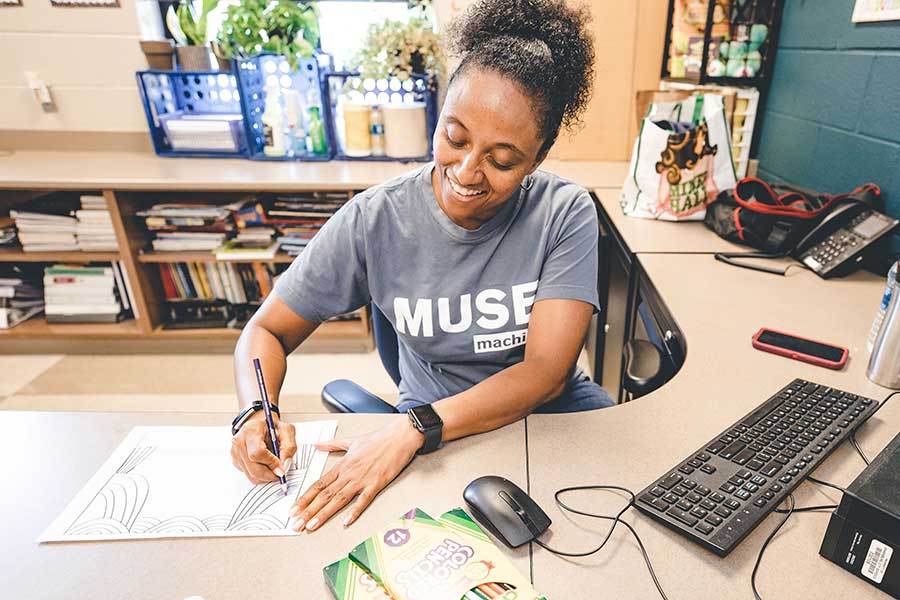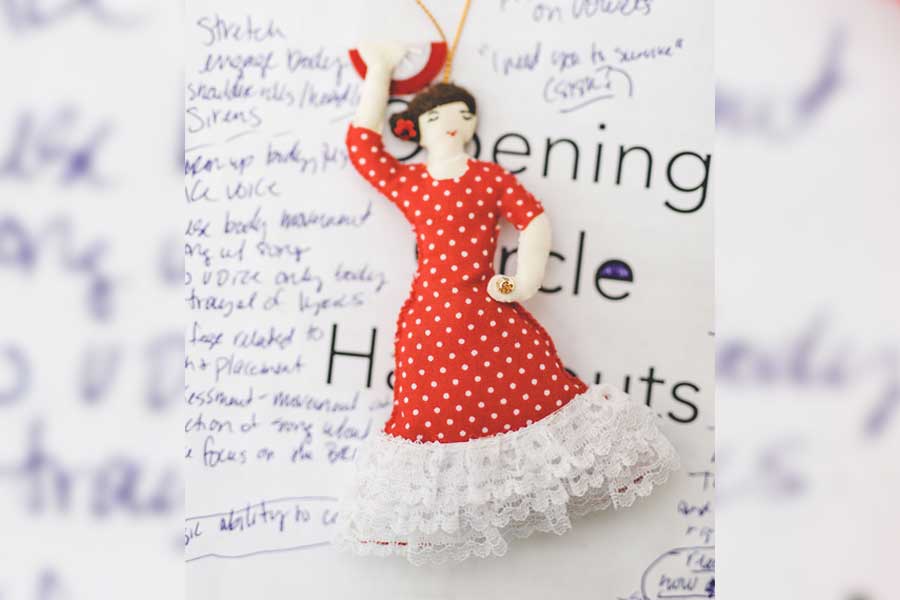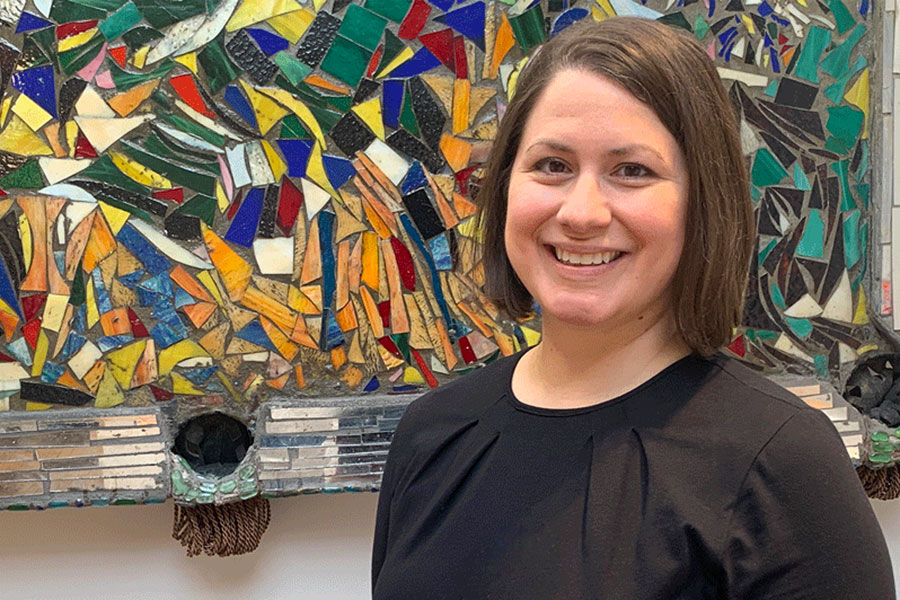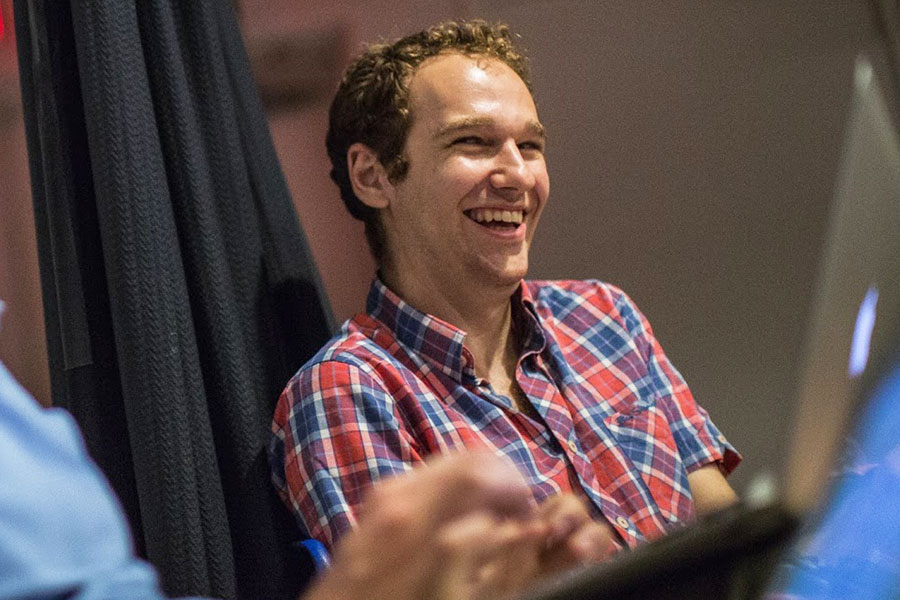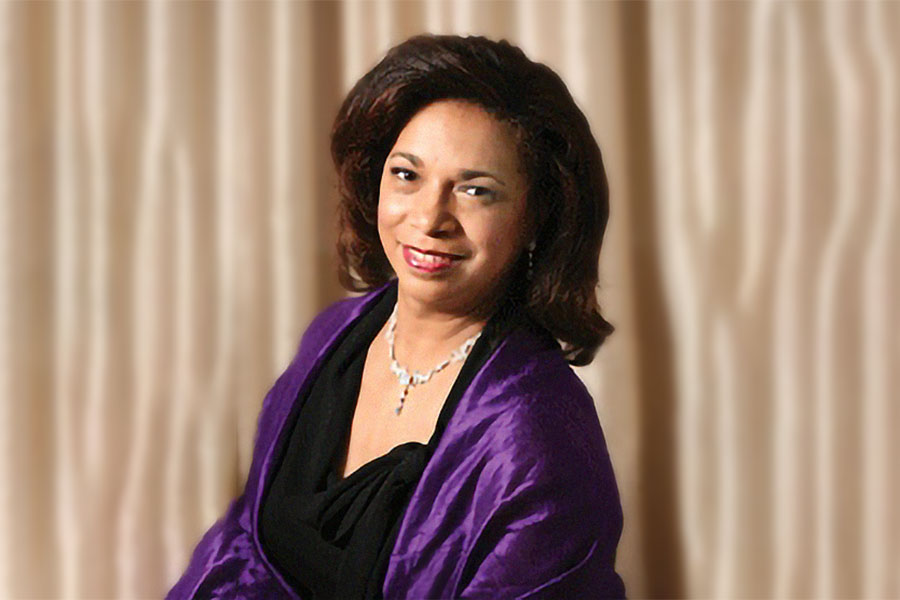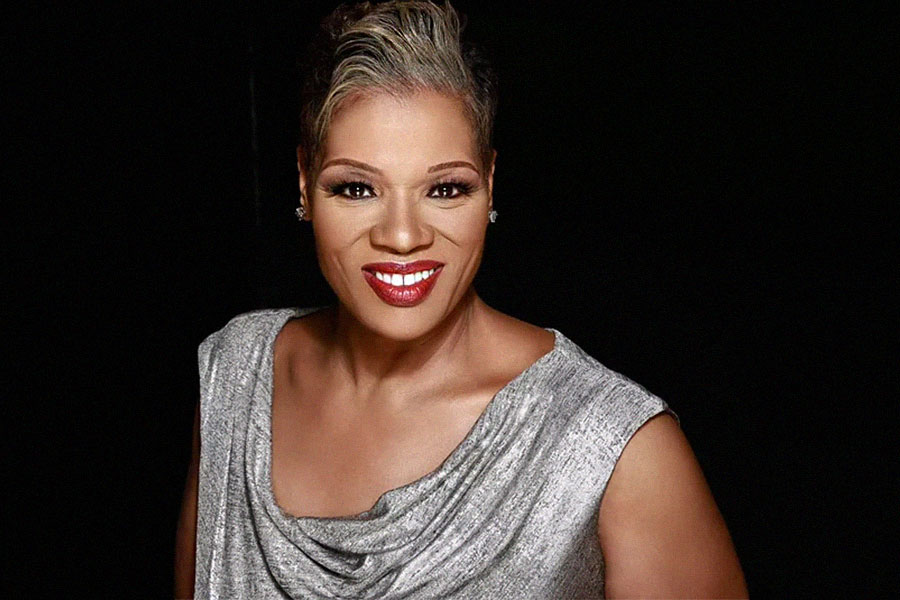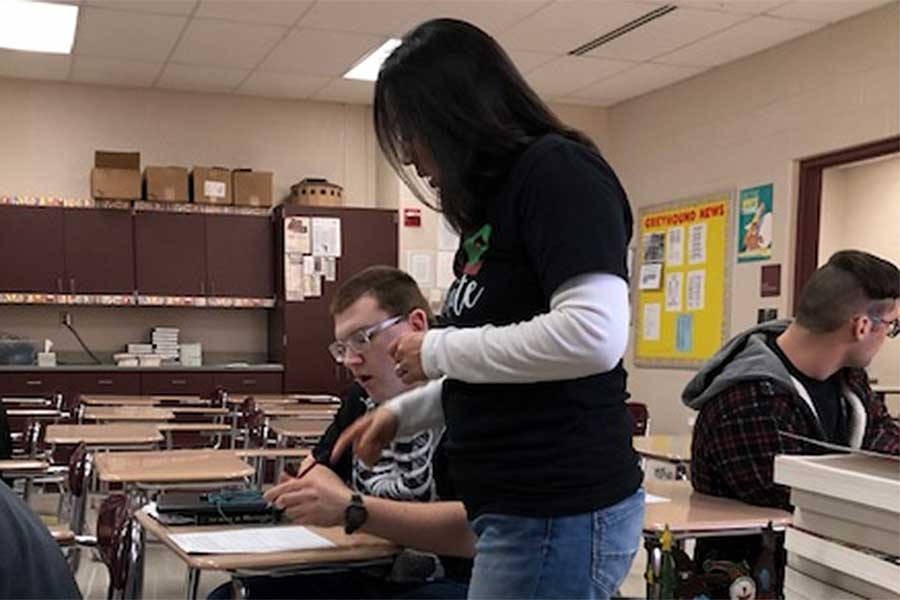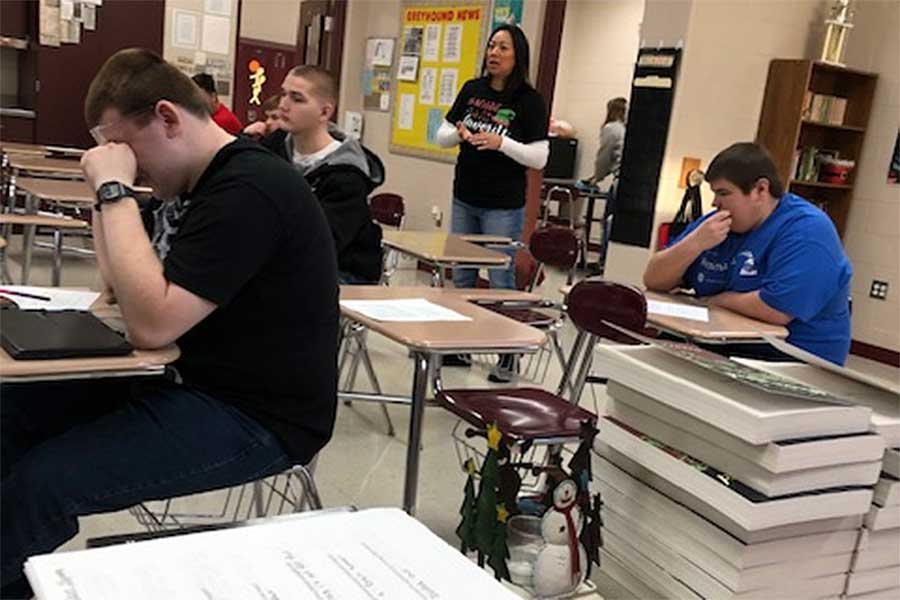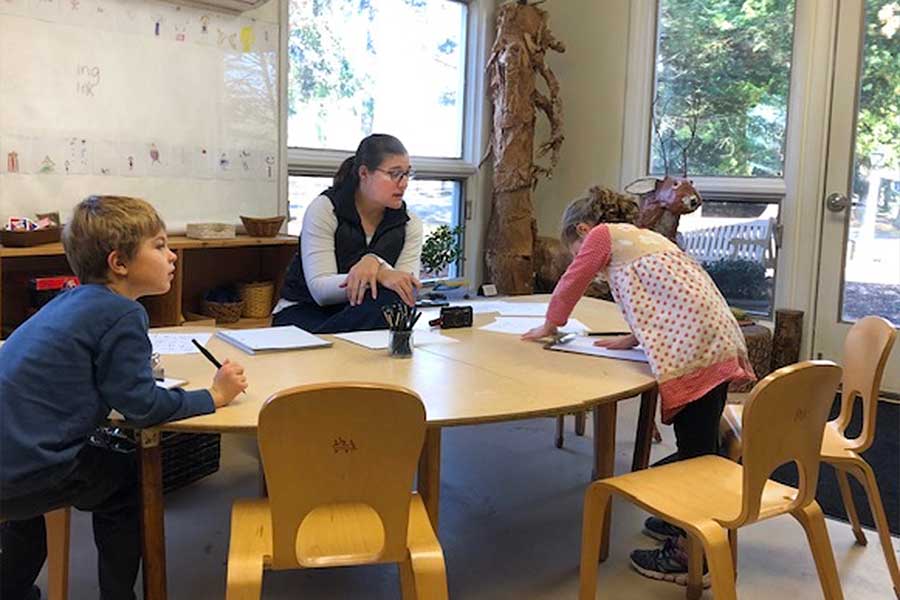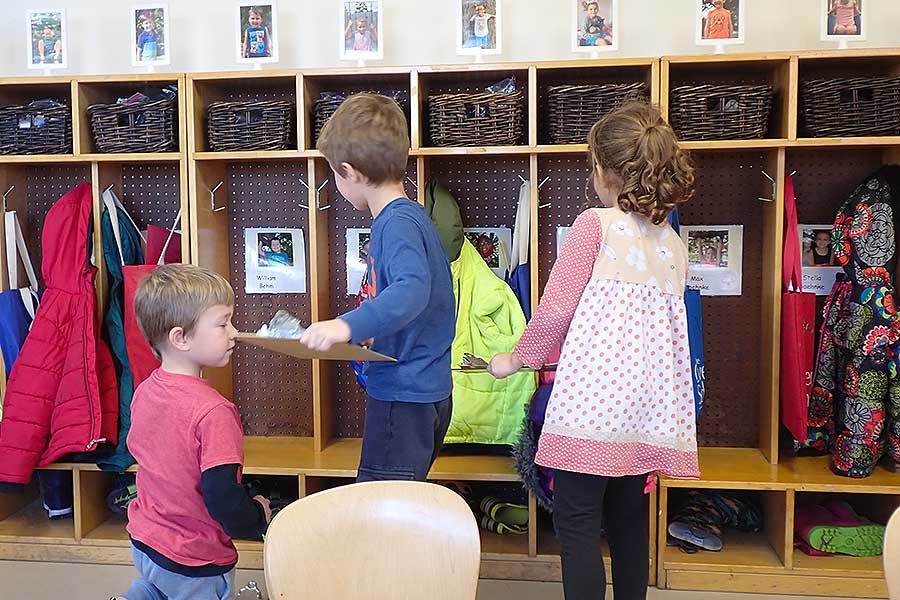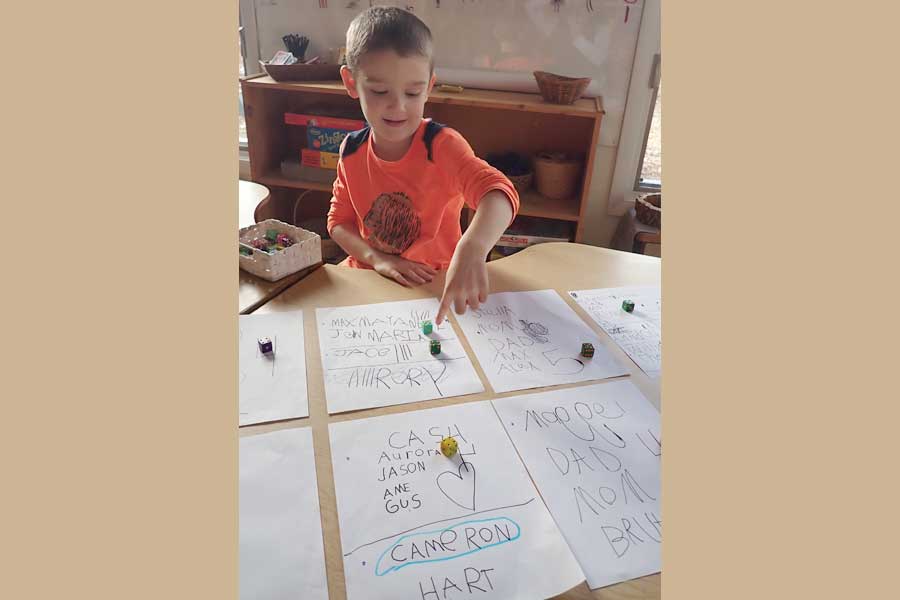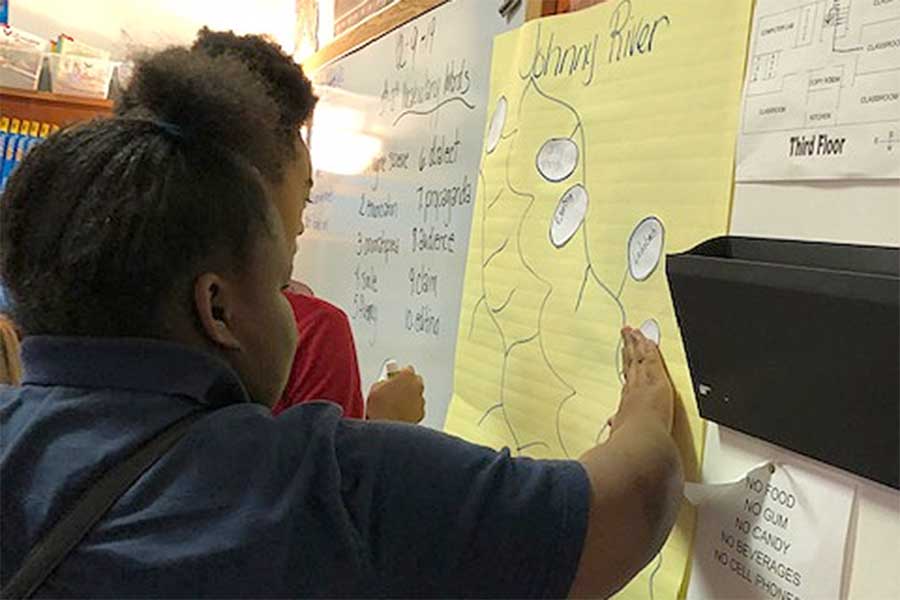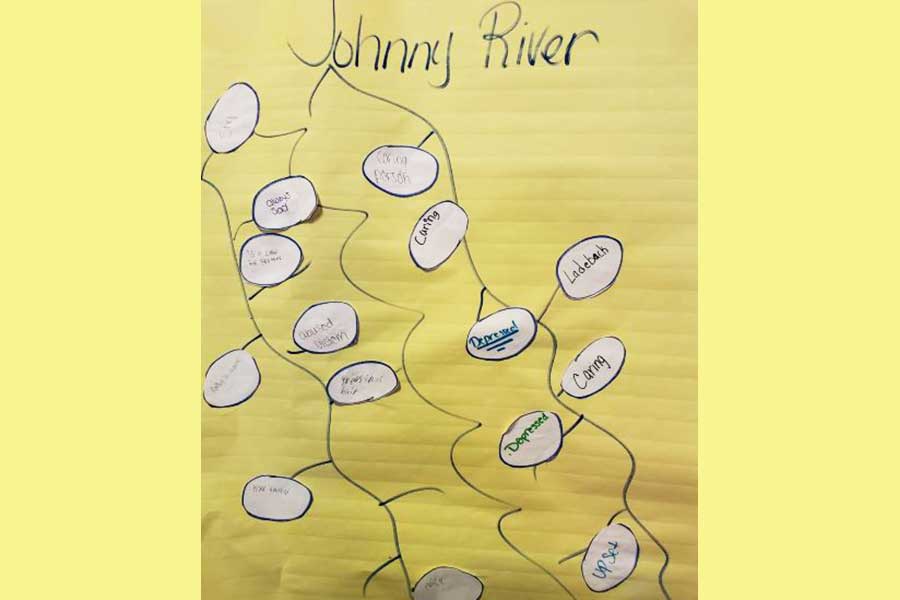Shoulder to Shoulder into the Fray: The Resilient Women of Opera
Prepared for Muse Machine by
Michael Sikes, Ph.D., Evaluation Consultant

Muse Machine
- Muse Machine is a nationally recognized arts education organization in Dayton, Ohio. It annually serves 76,800 students and their teachers in 13 counties in central and southwestern Ohio and Kentucky.
- Many of the schools served by Muse have diverse demographics, students from lower Socioeconomic Status (SES) families, and some with limited English proficiency.
- The mission of Muse is to change the lives of young people through the arts.
- To help attain this mission, Muse Machine conducts an annual four-day Institute with teachers from participating schools.
The Institute

The institute was designed as a multi-year partnership with participating teachers and their schools.
The 2021 Summer Institute for Educators, Shoulder to Shoulder into the Fray: The Resilient Women of Opera, along with Muse-sponsored, pre- and post-institute curriculum workshops, addressed key enduring understandings related to relevant contemporary issues:
- The arts can express and mirror a full range of human experience through the use of expressive language, music, drama, and visual symbolism.
- The arts can teach us to remain courageous and resilient in the face of adversity.
- The arts can both reflect and challenge important issues about the role of gender in society.
- The arts and humanities are deeply interdisciplinary and can provide teachers with numerous access points to their subject matter.
- Studying arts and humanities can help students to understand the culture and time period in which one or more works were created and our culture today.
The institute took place virtually on July 19-22, 2021.
Organizational Bios
The 2021 summer institute featured the following artist/educators:
- Brandon Anderson, singer/songwriter, composer/lyricist, and teaching artist
- Angela Marroy Boerger, Schools and Partnerships Manager, Arts Every Day, Baltimore
- Joel Esher, composer and music educator
- Stuart Holt, K-12 school and community/adult programming, Metropolitan Opera Guild
- Givonna Joseph, founder and artistic director, OperaCréole
- Joe Valone, opera singer and educator
- Bishop Chantel R. Wright, touring artist, choir director, choral conductor, teaching artist and advocate
For additional biographic information, refer to Appendix A: Artist/Presenter Bios
Overview of the Institute
The most important goal of the summer institute is to build a professional learning community in which teachers feel cared for and are brave learners. The institute focuses on creating a learner-centered environment where teachers share their unique voices with their peers as they work toward a strong foundation in creative knowledge and the skills needed to further their professional success as creative teachers. Over the years, its most successful summer institutes featured learner-centered educational practices:
INCLUSIVE PEDAGOGIES. Muse welcomes diverse learners, including those who have no formal training in the arts or are not subject matter experts. Activities are grounded in collaboration, community building, personal exploration and sharing. These pedagogies are the same ones that Muse expects to see in the classrooms as teachers find relevant ways to elevate ‘student voice’ in learning and the life of the school.
FOCUS ON EXPERIENTIAL LEARNING. Experiential Learning involves having a learning experience and then reflecting on it. It is designed purposefully by a teacher or artist and may take place in either formal or informal situations and in a variety of contexts, including classrooms or community settings. Teachers and artists can be taught how to use experiential learning through professional development that often includes modeling experiential learning—for example, during the summer institute. See Appendix B for more information.
TIME TO CONNECT. Staff, artists and presenters work with teachers individually, in small groups, and with larger class activities to help promote the dynamic, interactive, learning community that is at the heart of the summer institute.
ACTIVITIES THAT HAVE A PURPOSE. Learning experiences challenge the teachers in new ways that have a lasting impact, enhance their work with students and advance the overall theme of the institute and create a bridge to innovative and relevant curriculum and instructional practices.
Goals

The expected outcomes of the institute included these learning goals:
Monday, July 19
- Participants understand what makes opera operatic: themes, structure, music, characters and tone.
- Participants explore tableaux, pantomime, text and subtext as the building blocks for opera creation.
Tuesday, July 20
- Participants can explain connections between opera and societal issues, such as in The Merry Widow the representation of women’s experience of marriage and marriage laws and customs.
- Participants gain the skills to identify opera moments and create an original libretto for an aria.
Wednesday, July 21
- Participants understand how music is used to define a character by examining the music in Carmen.
- Participants see how opera can illuminate societal issues that characterize Carmen’s life and status.
- Participants understand how outsider status can be examined through opera and popular music from both a historic and a contemporary perspective.
- Participants gain insight into the world of props, sets and visual design for the stage.
Thursday, July 22
- Participants are prepared to draft a lesson and bring it to life in their classrooms with their students.
- Participants understand how there are diverse contributors to opera in America.
- Participants understand the contemporary forces that shape opera today.
Essential Questions
The institute was designed around several Essential Questions:
- Why opera? Why now?
- How can opera provide a model for self-empowerment, collaboration and self-expression for our students?
- What does opera reveal about the culture and time period in which it was created? What does opera reveal about our culture today?
- How does opera teach us to remain courageous and resilient in the face of adversity?
- In what ways does opera reflect and challenge important issues about the role of women in society?
- How does opera’s heightened emotional language mirror our internal emotional landscapes?
The Muse summer institute uses an approach that combines experiential learning, integrated instruction, and Understanding by Design, along with the extraordinary artistic and teaching talents of each year’s world-class SI faculty. The 2021 institute included the exploration of significant themes such as the relationship of art to social issues; sharing personal stories and creating artworks from them; elements and principles of opera; guided reflection; the development of techniques for arts-based student engagement; and classroom integration.

Evaluating the Institute
Several questions guided the evaluation of the institute:
- Was the institute planned and implemented effectively?
- Did participants perceive the institute as useful and satisfactory?
- Did participants acquire the knowledge and skills being taught in the institute?
- Did these educators apply their learning in their subsequent work in their schools?
- In what ways did their classrooms and schools change as a result?
The following processes are used to evaluate the institute:
- Surveys of participants, including daily formative assessments and a follow-up survey administered in fall 2021
- Interviews with participants, conducted via phone in winter of 2021–2022
- Critical review and analysis of planning documents, session handouts, daily surveys, lesson plans, and other artifacts
- Video documentation
- Reporting via multiple formats and to various audiences
The evaluation focuses on two aspects of the institute:
- Planning and Implementation: The extent to which the institute was planned and delivered so as to achieve success.
- Results: Various outcomes of the institute in terms of satisfaction, learning, application of learning and changes to schools.
In this report, results are summarized in a variety of ways. Many survey items are of the scaled or Likert type, offering options from 1 (“Strongly Disagree”) to 5 (“Strongly Agree”). The results of these items are reported as percentage of respondents who selected either “Agree” or “Strongly Agree.” Other items are multiple choice and are reported as percentages who selected each option. A third type of item collects open-ended responses. Such results are categorized and reported as list of categories with examples. For such items, the full text of responses will be included in the Appendices.
In any evaluation, it is essential to consider the context in which the program being evaluated takes place. The 2021 institute occurred during a time of turbulence and stress in the nation’s schools, characterized by demanding expectations, attrition and shortage of personnel, and a vastly changed landscape for teaching and learning to occur in, one that shifted from in-person to virtual learning and back again. The pressures that are put on the nation’s schools are often difficult; the pandemic considerably exacerbated this burden. Seeing the institute through this perspective, it seems remarkable that so many of its goals were met.
Planning and Implementation
Extensive documentation shows that the institute was the focus of a continuous process of planning, implementation and follow-up. In addition, photographic documentation and participant narratives affirm that the institute was implemented substantially as planned.
View Documentation
Results

The evaluation of the 2021 institute indicates attainment of the following results:
- Satisfaction. Participants were satisfied with their experiences and found value in them. This is an important finding because satisfaction is a necessary precursor to learning. Moreover, participants identified conditions of the institute that generally facilitated their learning, and a few pointed to areas of potential improvement.
- Professional Learning. Participants acquired targeted understandings, knowledge and skills from the summer institute.
- Application of Learning. Participants described ways they planned to apply their learning in their schools or were already doing so.
1. Satisfaction
In professional learning, participant satisfaction is often critical to successful learning. Both quantitative and qualitative data suggest that participants were highly satisfied with their experience.
Satisfaction: Metrics
The following section explores satisfaction through responses to several scaled items. (Note: Most of the tables in this and following sections report respondents’ agreement with specific statements on a scale of 1 (strongly disagree) to 6 (strongly agree) or N/A if an item did not apply to them.
Information and Logistics. Clearly, respondents were pleased with most or all of the logistical arrangements:

The Virtual Format. Due to COVID, the institute had a virtual format. Respondents were asked their perception of selected aspects of this format.

In addition, participants were asked the following: Were there any aspects of the institute setting, logistics and/or virtual format that contributed to or interfered with your learning?

Open-ended responses to this question provided several perspectives:
- The delay in the virtual world is difficult when collaborating in music. The artists handled it well. It’s still there, though.
- Because it was virtual, there were times my connection could have been better, but it wasn’t the fault of the institute.
- Sometimes I would get logged out, but honestly it was a very traumatic time for me, and I was in and out the best I could with my dog being very sick.
- Lagging and freezing during interactive sessions was problematic.
- Virtual learning just wears me out faster. Muse is the best at virtual experiences for educators! I just do so much better in person. Too much screen time for me.
- It’s just always better to be together, but in total, it was a great experience given what options we had. Safety FIRST!
Overall, was the institute what you expected, based on the publicity and communications with and from Muse?


Daily Survey Results
“[I’m] looking at something for my College American Lit class—maybe an American opera? Also exploring literary terms and character analysis via opera for my ninth-grade English class. Bishop Wright can help me warm up my “teacher voice” for the year. I always lose my voice during the first week or so!”
In response to the daily surveys, participants reported very high satisfaction with the institute content, the learning process, and their overall perception of the sessions. Note: In this section only, means (averages) were used to summarize responses because of the format of the response options.
Monday

Tuesday

Wednesday

Thursday

2. Professional Learning

“I think that Muse does a great job. It’s really exciting to have all these learning events that tie in together and aren’t just like a one-time, ‘good luck—you’re on your own.’ It’s very collaborative and inclusive, and very cooperative from the summer throughout the entire year.”
Professional learning is the all-important development of understanding and critical knowledge and skills required by today’s educators to meet the challenges of teaching in schools with diverse populations, disadvantaged learners, demanding course content including the Common Core standards and the widely recognized need for higher-order thinking skills to do well in 21st-century economy and society.
The considerable data in this section is divided into the following categories:
- Ratings of Specific Days and Sessions
- Understanding and Knowledge of Opera
- Rating of Instruction: Open-Ended Responses
- Transfer to the Classroom
Ratings of Specific Days and Sessions
As reflected in the previous section of this report, participants were quite positive about the content of the various sessions. The following tables summarize responses to the fall follow-up survey, specifically to items referencing sessions on the various days. Responses are the sum of “Strongly agree” and “Agree.”
The following tables report overall daily goals. Ratings of sessions led by individual artists can be found in the Appendix C: Detailed Session Ratings.
Multi-day Session, Monday through Thursday
Opening Circles & Closing Reflection presented by Bishop Wright

Monday Learning Goal(s)


Tuesday Learning Goal(s)

Wednesday Learning Goal(s)

Thursday Learning Goal(s)

Lesson Planning
In addition, institute participants were asked about sessions dedicated to developing lesson plans incorporating their learning.

As a follow-up to the last item on the above scale, respondents were asked the prompt, “Please briefly explain the lesson(s) or unit(s) you are drafting or enhancing. If you have already implemented an activity, briefly describe how it went.” Representative answers include:
- Carmen with the kindergarten music students. Steady beat, unsteady beat (Carmen does what she wants) Habanera rhythm.
- I am having students draft a song as response to literature. Working on putting students in groups to create an opera for a scene in their story.
- I will be planning an English Language Arts lesson regarding the role of strong women
- I presented my lesson at the Muse meeting—use Band Lab to create an operatic piece.
- The institute inspired me to truly listen more to the voices of my students. Do I hear their joys and struggles? Do I appreciate their backgrounds and perceptions? While this may not be an overall lesson, it does impact the way I teach, discuss, and even grade student work.
- Based on my experience with the summer institute, I integrated the Touch Box and collaborative approach to studying a new performing art form. [Touch Box: A tactile activity developed for special education and kinesthetic learning, adapted by the presenter from a session at the New York South Street Seaport Museum.]
Teaching Resources


Understanding and Knowledge of Opera
“Opera is life, and I never realized that before.”
—2021 Summer Institute Participant
A fundamental objective of the 2021 summer institute was to help participants to develop effective understanding of opera as an art form. The following three questions from the fall survey gauged the attainment of this objective. (Each question is followed by several exemplar responses. The full text of all responses is in Appendix D: Understanding of Opera.)
Please comment on the extent to which the institute has helped you to understand the elements of opera.
- It has helped me become more comfortable with opera. I have known of the elements in opera but have been hesitant to use opera in my music classes, because I didn’t have much experience with opera.
- I did not have a lot of prior knowledge about opera before the institute. I’m happy to say I gained a lot of understanding and appreciation for this art form due to the institute. I also feel moderately confident that I could teach others what I’ve learned.
- The institute helped me to understand the elements of opera much better because we took what we learned in the workshops and applied it in our group work.
- The activities helped to put the elements of opera into perspective. I liked learning about how the writers of opera develop their lyrics poetically and how the lyrics’ meanings relied a great deal on inference and understanding of the characters.
Please comment on the extent to which the institute has helped your perception of opera as a vehicle for exploring the connections between historic and contemporary social issues.
- The setting and historical context is a great steppingstone to learn about other cultures and time periods. I used this to help students learn about traditional Spanish instruments and the Cuban Habanera rhythm.
- The connection between the history of black opera and the current Black Lives Matter social injustice. I was also fascinated by how opera speaks to the power of women and women’s suffrage.
- I was able to see the similarities between how women struggle with societal expectations based on gender and class that are still present today.
- The institute greatly helped me see the value of opera as a learning tool in the classroom and I’ve already taught a lesson using some of what I learned this year.
- Opera, especially modern operas, offer students a way of seeing how art can bring history to life. While opera may not be useful in every lesson, opera has an extremely dramatic way of putting life into historical figures and the struggles they went through.
Please comment on the extent to which the institute has helped your perception of opera as a living, changing art form.
- I loved how we were able to put different social events to rhythm and song in the workshop. My group explored how a conversation would go between a suffragette (forced by the vocal male-dominating group to be on a ballot for mayor) and her husband. We had context and a photo. With this we created a dialogue to music.
- I appreciate how the opera has stories that speak to current issues and have evolved to help the audience better understand the stories. The subtitles are incredibly helpful.
- I love the idea that everyone can put their thoughts into song and the song can accent the emotional qualities of life at any particular moment. Historical events are not the only opera-worthy moments. Bus rides, school, and other livable moments provide operatic opportunities for exploration.
- Opera across time and cultural borders resonates as a living, fluid art form. Speaking with an opera performer who experienced both cultural and artistic change.
Rating of Instruction: Open-Ended Responses
“I loved the improv opener Joel did with our breakout group. Someone posed as a strong character, then another person narrated what that character was saying, and then a third person interpreted what that character was thinking (conflicting thoughts and words were encouraged). I would use this with my class during a novel discussion about characters or as a warm-up with my drama students before rehearsals.”
Effective Instructional Techniques
Most participants were educators attuned to pedagogical practice. That they could identify and articulate instructional techniques they considered effective is an important indicator of their learning. This is important in a general sense. From a constructivist viewpoint, the participants’ awareness of their own learning has important implications for metacognition and self-efficacy (an important construct of learning theory originally proposed by psychologist Albert Bandura).
The following lists some of the instructional techniques they noted (these are verbatim comments from participants):
- Break out groups
- Video clips
- Guest lecture
- Paper handouts that were sent
- Breakout room to discuss how we can use this in our classes
- Composing techniques
- Creating the dialogue in groups
- Group work and writing activities
Numerous participants described this effectiveness in greater detail:
- Brandon was the best thing. He got everyone involved in our breakout group in a way that was not threatening or taxing to any one person.
- I love the explanations and the examples to go with the examples. Being able to hear and see what is being discussed/taught makes learning easier.
- Everybody seems to have the hang of Zoom by now!! Presenters used the technology very effectively. I like that everybody is invited but not forced to participate/speak up in the whole-groups sessions. Joel did an awesome job of moving us along in the breakout session. The screenshot tableaux were fun. I also appreciate that my limited knowledge of opera is not much of a handicap. I love the clear and well-followed schedule!
- The slow progression of introduction, example, then practical application. I REALLY appreciated the time to formulate lesson plans on our own for a few minutes before lunch.
- I don’t know if “meaningful” is right, but I really enjoyed/appreciated Buist Bickley’s presentation. He sparked an idea for some kind of rotating “careers in theater” bulletin board or some other way to do a better job with making career connections that go beyond our music and drama kids. I have a student in mind who would be an amazing prop designer, but I bet she would never think of that as a career option.
Knowledge and Skill Identified by Participants
Many participants described understandings, knowledge or skills they developed during the institute:
- Learning the different types of opera singers and the different parts of an opera.
- Love the attempt to include real vocab and starting with the preconceived ideas of opera as a whole. This is my formal background and professional experience, so I am super excited that we are incorporating it across the Miami Valley!!!
- I loved the in-depth background about both opera and women’s history. It was also extremely helpful to have a few minutes penciled-in to work specifically on applying our new knowledge toward lesson planning.
- Speakers were all great! I learned many new things about opera and lots of new vocabulary. My favorite line of the day: “This is safe. We can learn new things here.” That was very encouraging to me as a person who can barely sing Happy Birthday without creating fissures in the time-space continuum and was being asked to sing vowel sounds. Although my college-aged kids (and the dogs) came running to see if I was okay…
Social Learning
Many comments referenced the social aspect of learning as an important valued added to the institute:
- Working closely with the other group members in our breakout sessions
- Getting to reconnect with Muse teachers
- The chance to meet other professionals was the most meaningful.
- Collaboration, discussion of opera in a way I don’t normally get to hear
- Seeing the joy that opera brings to our speakers light up their faces while they were sharing; learning operatic vocabulary; feeling the warmth of Ms. Givonna Joseph’s lovely, pragmatic kindness being sent out to me specifically and the whole world in general; Opera is life, and I never realized that before.
Transfer to the Classroom

“My own discomfort and lack of knowledge of the subject matter reminded me to be aware of the reality that when students are learning new skills and concepts in the classroom, they are stretching themselves and taking risks. I need to be mindful of the importance of creating a safe classroom community in which mistakes are important aspects of learning, rather than moments to hide or be embarrassed about.”
A critical aspect of the institute is the development of transferrable knowledge that can later inform teaching. In the daily surveys, many participants described experiences in the institute that they could use in their classrooms. The complete responses, which are lengthy, are summarized here and presented in full in Appendix E: Transfer to the Classroom.
Understanding, Knowledge and Skills
- I really loved the investigation of how all characters feel/think. That perspective opens up so much of what I teach (English for grades 9 -12). I could go into so many lessons with new approaches, subjects, assignments, etc.
- I appreciated trying to take on a different perspective. It’s humbling to try to argue/convince when you aren’t 100% behind something. I feel like I can apply this to personal and professional experiences right away!
- Thinking about the legal status women held in society in the 1840s when abolitionists began to push strongly for suffrage. The ability of a few people to ignite fundamental change in a society.
- My own discomfort and lack of knowledge of the subject matter reminded me to be aware of the reality that when students are learning new skills and concepts in the classroom, they are stretching themselves and taking risks. I need to be mindful of the importance of creating a safe classroom community in which mistakes are important aspects of learning, rather than moments to hide or be embarrassed about.
Ideas for Application
- Band Lab! Color/mood. Process for composing. Listening with a rubric. Using motions to represent sounds while listening. Really almost anything from today!
- The materials and activities were things I do in my classroom, but they were done in a slightly different way which made them 100x better
- I really felt the writing and collaborating while writing was super helpful. It gave me the chance to see what group work is like for students once more. That is always helpful to remember.
- Using women’s suffrage material that I can use later in my classroom
- The aria writing in the breakout groups (I wasn’t here for the beginning of the workshop).
- Thinking about the legal status women held in society in the 1840s when abolitionists began to push strongly for suffrage. The ability of a few people to ignite fundamental change in a society
- The concept of tableaus is one I’ve used without calling it by that name, but “setting the stage” is what brings the magic to an elementary school lesson. I am looking forward to being able to create those scenes again this school year, and my mind is busy planning.
- I plan to have the students write leitmotifs either to an already-established story or to a scene that they create. I teach band and the flutes can write for a character, the trumpets another character. I can also do this with my kindergarten music classes with children creating and singing a short story and accompanying it on rhythm instruments.
- I am SO going to use the touch box in the classroom, and I am working on implementing some of Joel’s ideas from his session today as well.
- I would use the box, but in a different way. I would like students to find one object to use to symbolize a character, scene, etc. Then they would have to “reveal” their object and explain it to the class. That keeps their ideas secret until they present and only having one object takes the pressure off of them presenting.
- I’ll use the 3-minute opera audios, as well as the illustrated synopsis of Carmen. I often use all-over-the-map warm-up activities at the beginning of the day that challenge kids to think differently and creatively. I can see the touch box that way, maybe as an SEL activity. I will almost certainly use variations on Angela’s music/drawing activities.
Teaching Thinking Skills
The potential for transfer includes the development of deeper or higher-order thinking skills:
- I loved the improv opener Joel did with our breakout group. Someone posed as a strong character, then another person narrated what that character was saying, and then a third person interpreted what that character was thinking (conflicting thoughts and words were encouraged). I would use this with my class during a novel discussion about characters or as a warm-up with my drama students before rehearsals.
- I am going to teach a new course this year “World Music.” I plan to introduce music from different cultures and ask questions that require students to think about what they’re hearing from different perspectives (Example: steel pan music from Trinidad… many think it’s just party music, but what was its original intent?)
- The workshop is inspiring me to help students relate to current events through music. It is also inspiring me to help students overcome any fear and misconceptions regarding opera.
These comments from the surveys are corroborated by responses to surveys posed in telephone interviews and summarized here. The full text in of the responses appears in Appendix F: Interview Responses.
How confident do you feel in applying opera-based learning in your classroom?
- I do feel confident. Initially my confidence was built because I went back and looked at some of the resources, just because there are so many things to go through that I think the handouts we have are just reminders of things we talked about, makes the topics a little bit more easily accessible based on being able to go back and look at what we talked about. Because everything is kind of put together quickly—which is great because you get this little flood of inspiration, but then life happens and you get back to, sometimes those connections get lost.
In what ways could your experience with opera-based learning be deepened?
- I liked what they were doing this year, they were bringing artists back, and people who ran the discussion…I think that’s really helpful. I also think it would be really cool to have some little mini-videos, things that we could share with our students that might have one of those aspects in opera…It would be something fun to share with our students in the classroom that wouldn’t take too much time away from what we are working on.
- I would like to continue to receive opportunities for follow-ups such as attending opera performances, continuing to have the opportunity to use the partnership with the Met and allow students to engage with those opportunities to see opera in the theatre or online, and I’d love to also continue to have access to lesson plan ideas and support such as our list of reading topics and books and primary source documents with our Dayton Metro Library System. [Also] do a summer follow-up addressing institute topics this coming summer and continue to have teachers share the lesson plans they’ve created using these ideas and resources from the Summer Institute.
In what ways could Muse strengthen the connection between institute content and your curriculum?
- I like that they [Muse] are checking in with us, and they ask us and they have teachers showcase the work that they’re doing because I think that also validates things we’re trying in our classrooms. It gives us more of an opportunity to question and talk to each other, so I think that the things they are doing really scaffold what we’re trying to do as well as what we get inspired to do as well.
Are you already using opera-based concepts or connections in your classroom? Have you developed lesson plans that incorporate concepts from the 2021 institute?
- I took advantage of the supplemental reading list of books about fierce women, and I brought those back to my classroom for the students to use in their independent reading time. And I have not taught a lesson yet, that’s still to come, but I have used primary source documents like photographs and editorial cartoons and had the kids write their impressions and interact with the information similar to what we did, I think with the day 2 suffragette information. But specifically, I haven’t talked about the fierce women yet. I plan to do that in coordination with Women’s History Month and the Suffragette Movement when I get to that topic on my timeline of history.
- The institute was something that—opera was not necessarily my wheelhouse, and I was glad to learn something that I didn’t have a lot of prior knowledge about. It just proved that it’s just universal, certain themes, and I loved the resilient women theme within the theme of opera, and I could easily incorporate within the suffrage movement other things.
- I use pantomime and tableau…and I’m using those in our winter play…It is instruction based, teaching students more about acting and how to be on stage and understand the terminology through that, and that way it can carry anytime they are on stage for any performing artwork or anytime they go to see anything.
- I have a future lesson plan that I will be using regarding the Suffrage Movement…from day 2 of the institute.
- I also use the reflection, like the creative group work…That’s very valid not only for my students but for myself.
Are you noticing any evidence of student learning? Please describe. Do you have any documentation of student learning that you could share with Muse?
- The way to be able to measure the student learning will be, do they understand the historical content of whatever the photo is or the journal entry [she provides opinions of two historical figures, one pro and one against Suffrage Movement]. The kids interact with opinions of the two women and then write their own letter about pro or con for suffrage.
- My timeline for history is from colonial period to late 1800s after Reconstruction, so women’s suffrage hasn’t been achieved during that time period, but the period of women meeting and having conventions would be the early 1800s, so, as I get closer to the 4th quarter of the year, that is when I will have the student learning artifacts that I’d be happy to share.
3. Application of Learning
“I plan to have the students write leitmotifs either to an already-established story or to a scene that they create. I teach band and the flutes can write for a character, the trumpets another character. I can also do this with my kindergarten music classes with children creating and singing a short story and accompanying it on rhythm instruments.”
Notably, institute participants seemed to understand the nature of their experience at a deep level. In post-institute interviews and surveys, they were able to explain the vital connections across subjects and the nature of the learning cycle. This insight should more fully equip them to apply their learning in their classrooms.
Lesson Planning

Lesson plans developed by participants following the institute are an important source of data. An analysis of these plans will usually look for the following characteristics:
- The lessons reference important content and learning objectives, such as the Ohio Core Standards or to the Common Core Standards.
- They reflect content from the 2021 Institute, and importantly, connect the content to their students.
- The lesson plans focus on enduring understandings and higher-order thinking skills.
- The plans incorporate high-quality assessment components aligned with learning goals.
The nature of virtual learning is socially isolating, and yet it requires focused concentration and extend time at a computer. For these reasons, Muse provided shorter sessions for the 2021 institute. Given the shorter timeframe, it was suggested by one of the artists that they focus on the design of relatively brief instructional activities, which would serve as building blocks for eventually creating lessons. Consequently, the expectations were different from past institutes when longer days and more institute time were spent on lesson planning.
Thus, the lesson plans developed from the institute should be thought of as first drafts much like what would be put in sketch book. As with any creative work, higher levels of quality are reached through multiple iterations and attempts to reach a more realized form.
At the time of this report, only three such drafts of lesson plans had been completed and submitted to Muse. They are included in the Documentation Page. Although each of the lesson plans contains components that are strong, the design and use of effective assessment is inconsistent. This is despite several teachers having begun work on such plans at the time of data collection for this report. It is expected that follow-up will produce more complete examples, which will be available at the Muse website.
Muse recognizes the centrality of good assessment in teaching and learning and is committed to improving its use among summer institute participants. The following steps are planned for 2022:
- One-on-one mentoring with teachers who voluntarily commit to working on the assessment components of their lessons, including those already submitted at the time of this report. Teachers will be offered a stipend for this work.
- A dedicated session focusing on assessment at the 2022 summer institute
- Revision of the Muse lesson planning template to align assessment more effectively with learning outcomes, including standards and enduring understandings
Conclusions
Based on varied sources of data, it seems clear that the 2021 institute amply met its goals of engaging participants in absorbing learning experiences, developing understandings related to the medium of opera, and helping participants to envision how they could use these understandings, knowledge and skills in their teaching. Both quantitative and qualitative data confirm this conclusion.
Across the nation, educators and other school personnel are feeling unparalleled stress, not only because of the pandemic and the consequent vacillations between in-person and virtual learning, but also as a result of increased politicization of curricula, teacher burnout and attrition. The participants of the 2021 summer institute are no exception. They had been through a year marked by increasing expectations, diminished resources and a radically different terrain in which to do their work. Their joy at being in a place of artistry and expression, even if a virtual one constructed of computers and Web conferencing, was evident in their work during the four days and their reflections on their experiences.
Logistically, many participants found the virtual format frustrating at times, though apparently not to the detriment of meeting the learning goals. Moreover, the comments regarding the virtual format were consistently accompanied with compliments and praise for Muse staff and artists for their careful crafting of the experience, often along with acknowledgements of the necessity of avoiding an in-person event during the pandemic.
On the other hand, the virtual learning experience does not appear to be without value—in fact, far from it. In previous years, the evaluator has collected data from Muse teachers suggesting that the use of distant and even asynchronous learning may have distinct advantages in some contexts and applications.
Participants seem to have begun incorporating their institute experiences and opera content into teaching strategies and lesson plans. However, the development of effective assessment continues to pose a challenge for some participants. Addressing this gap is an important goal of Muse, based on its view that assessment is essential to effective instruction.
Given the theme of the 2021 institute and its obvious relevance for many of the schools, educators, and students of the targeted communities, it would be useful to collect additional evidence, including the implementation of lessons based on the institute.
Recommendations
Based on the findings of this evaluation, the following are recommendations for Muse Machine:
- Take full advantage of a return to an in-person format as soon as concerns for safety permit. Despite everyone’s best efforts and recognition of the obvious priority for precaution, it seems clear that most future participants will value the face-to-face learning that the summer institute has provided so often in the past.
- Continue to utilize the technological innovations pioneered during the pandemic to increase the reach and breadth of Muse’s work with teachers. While the summer institute would probably be best in classrooms and theatres, other forms of professional learning throughout the year might well be delivered via eLearning and help bridge some of the considerable geographic challenges that many educators face.
- Provide an enhanced focus on lesson planning, and especially on the development of effective assessment tools aligned with lesson outcomes and thinking skills.
- In the past, Muse has helped teachers go from a good level of practice to an advanced level. Given the findings in this report regarding assessment, Muse should consider developing a lesson plan and assessment Community of Practice, beginning in the spring of 2022. It would initially comprise five teachers, who would be selected based on interest and capacity; each member would receive a $500 honorarium for participation in four interactive sessions with one or more facilitators with expertise in assessment and lesson design. The goals are that each would take their work to the next level and lead a CAM session about what they learned. The process would be fully documented and promoted via Muse and school publications.
Participant Demographic
Participation Rate, by Day

Participant Gender

Participant Age

Which of the following best describes your ethnic background or race?

Which of the following best describes your primary role as an educator?

Do you work with a Title I school wherein 40-60% of students are eligible to receive free or reduced-price lunches?

Which of the following descriptors best fits your school?

Appendix A: Artist/Presenter Bios

Brandon Anderson is an award-winning singer/songwriter, composer/lyricist, devised theatre creator and teaching artist living in New York City. Brandon has extensive experience in arts education, teaching for the Metropolitan Opera Guild, Lincoln Center Theater and Tectonic Theater Project. Brandon is also the Artistic Director and Dramaturg for NYU’s Tisch New Musical Theatre Workshop.

Angela Marroy Boerger is the Schools and Partnerships Manager at Arts Every Day in Baltimore. Boerger was formerly the Education Manager at the New York Metropolitan Opera, where she led the education curriculum for the Met’s HD Live in Schools. She holds degrees from Yale in music history and degrees from Rice University in musicology and medieval studies.

Joel Esher is a composer and music educator currently living in New York City. Esher has worked as a teaching artist for the Metropolitan Opera Guild, Carnegie Hall, Disney Theatrical Group, the Metropolitan Opera, Dreamyard and Playwrights Horizons Theater School, among others. His work is grounded in improvisational comedy, which he has taught and/or performed with The Second City and ComedySportz among others.

Stuart Holt oversees all K-12 school and community/adult programming for the Metropolitan Opera Guild. He is an active lecturer, master teacher, stage director and resource in the field of opera education. Recent lecture appearances have included Manhattan School of Music, Opera America and the Met Opera HD in Schools program. He also appears as a cohost on The Metropolitan Opera Guild Podcast.

As founder and artistic director of the award-winning OperaCréole, Givonna Joseph has dedicated her career to researching and performing lost or rarely performed works by composers of African descent. Joseph’s research has been featured in The New Yorker, Southern Living magazine and on NPR. In 2018 she created an original opera, The Lions of Reconstruction: From Black Codes to the Ballot Box, in honor of New Orleans’ tricentennial.

Joe Valone is an opera singer and educator who has led numerous classroom residencies through the New York Metropolitan Opera and the Metropolitan Opera Guild. He was a featured presenter at the Met’s National Educators’ Conference from 2015-2018. Valone has performed principal roles with Opera North and Ohio Light Opera. Valone is currently the Manager of Major Gifts at the Metropolitan Opera.

Bishop Chantel R. Wright is an internationally celebrated touring artist, choir director, choral conductor, teaching artist and advocate. Committed to youth, Wright established The Songs of Solomon Academy for the Arts serving NYC students and lends her talents to the Steinhardt School of Music at NYU, Carnegie Hall’s Musical Connections and the Metropolitan Opera’s National Educator Conference.
Appendix B: Experiential Learning
“Education is not preparation for life; education is life itself.”
– John Dewey
Why Muse Pedagogy Matters: Our work with schools, teachers and students is grounded in theory, research, best practice and joyful learning. At the center of this work is a pedagogy that is arts-based and experiential and allows for the application of learning in a wide range of subject areas. This pedagogy also positions artmaking as a core function of learning and life. Through our work we honor every learner’s prior knowledge and experience as foundational in the pursuit of new knowledge that naturally builds over time with practice and reflection. As a result, learners naturally reflect on their learning process and understand its meaning in their cognitive development and their lives.
Introduction
During its 2016 Summer Institute for Educators, Muse Machine honed its approach to professional development, which employed experiential teaching and learning. Results of subsequent institute evaluations and many comments of participants and teaching artists suggest that the approach was effective and appreciated. The 2021 Summer Institute will build on this success, again employing experiential learning throughout its four days. This resource guide provides an overview of this technique.
What is Experiential Learning?
Experiential Learning is learning through experience. More precisely, it involves having a learning experience and then reflecting on it. Reflection is a key part of the process, as it:
- deepens the learning experience;
- helps to foster meaning; and
- promotes greater retention and transfer.
Experiential learning is an intentional process, designed purposefully by a teacher or artist, and may take place in either formal or informal situations and in a variety of contexts, including classrooms or community settings. Teachers and artists can be taught how to use experiential learning through professional development that often includes modeling experiential learning—for example, during the summer institute.
Philosophy, Purpose, and History
Experiential learning has a long history, going back to the time of Aristotle. It gained prominence in the last century with the work of American philosopher William James (ca. 1910). Early thinkers included John Dewey and Maxine Greene. Contemporary theorists include David Kolb. The methodology increases student engagement, accelerates learning and retention, and sets the stage for:
- Deeper learning and transformation of experience into new knowledge;
- Promoting teamwork and communication skills;
- Developing reflective-practice habits where students learn metacognition, contemplating about their own thinking; and
- Immediately applying knowledge to boost transfer of that knowledge to other areas of study.
For 20 years, the Lincoln Center Institute pioneered experiential learning through the inspired teaching of Philosopher Maxine Greene, who emphasized breaking through habitual patterns of thought to understand the world through new ways of knowing, seeing and feeling.
How Does It Work?
Various sources on experiential learning agree that it consists of a multi-stage process, an example of which follows:

Practical Examples: How It Looks in the Classroom
- Students experience working with or in an artistic medium.
- As a class, the students reflect on their experience. This process may be facilitated by the classroom teacher, an arts specialist, or a teaching artist.
- Students develop more abstract thinking about the experience. What did it mean to me? How might I apply it in the future? How does it illuminate other aspects of my studies?
- Students continue to apply their learning in new contexts (e.g., with other media or materials, themes or ideas).
The process can be repeated to deepen learning.
Thoughts on Experiential Learning from the 2018 & 2019 Institutes
“Experiential learning invites the experience and expertise of the individual learner to meet the subject matter in a state of heightened awareness and discovery. This process allows the learner to mine his/her own genius to articulate the subject matter in a way that sticks. In the 2018 Jazz Power Institute, contextual materials related to rhythms under study; and, historical movements, such as the fight for women’s suffrage, were used as jumping-off points for individual and group exploration through improvisation and other means.
“Periods of reflection through personal journaling and small and large group reflection sealed the deal by allowing participants to recognize patterns, personal and cross-discipline connections, and further articulate what they had learned.”
—Eli Yamin, Managing and Artistic Director of Jazz Power Initiative and Teaching Artist in Muse’s Summer Institute for Educators: What Jazz Can Teach Us
“Learning through experience is an extended theme in the history of educational philosophy and has been important for some time in American education, both in practice and theory. For example, The LEAP Employer-Educator Compact from the Association of American Colleges & Universities explicitly states that experiential learning is required for the 21st century, calling on institutions to ‘support, and expand 21st-century designs for high-quality, hands-on learning.’ The work at Muse Machine is ahead of the field because it prepares both faculty and students for the future of learning by emphasizing collaboration, leadership, communication, and inclusion. Most important is the way in which Muse engages populations who traditionally would not have exposure to the benefits of experiential learning. It is no secret that the best educational resources go to the schools and students that have the greatest resources. Muse helps to level the playing field. I am such a fan of Muse Machine’s approach to experiential learning by design and am confident that this effort is helping to strengthen the educational foundation of those who are poised to diversify and transform their communities and workplaces over the next 20 years.”
—Dara N. Byrne, Ph.D., Associate Provost for Undergraduate Retention and Dean of Undergraduate Studies, John Jay College of Criminal Justice and Presenter at Muse’s Summer Institute for Educators: What Jazz Can Teach Us
“When I first read John Dewey’s Art as Experience, what struck me as vitally important was looking beyond the material ‘work of art’ to how we experience it. Even as a child, I was aware of experiencing art as I sat beside my mother during concerts in the park, or as I pored over images in her art books. Later, during teacher preparation, I wondered how I might help others heighten and prolong their aesthetic experiences when viewing and making art.
Dewey and Greene compelled me to look beyond the didactic world of arts education and see the importance of attending to the experience of the arts. Ultimately, aesthetic education theory helped me to create experiences that would allow learners to slow down their natural tendencies to classify or make judgments about art and focus on allowing the arts to live more fully in their bodies and minds. And working with educators reminds me how important it is to get adults out of their thinking heads and into the aesthetic realm to more fully experience the arts or to savor the aesthetic qualities in the world around them.
In professional development, I start with art-making before digging into other aspects of arts learning, such as history, culture, craftsmanship, artistry, etc. I go for the ‘gold’—feeling the arts viscerally as makers and viewers, holding onto aesthetic experiences, and reflecting on those experiences for insight and personal meaning. Dewey and Greene understood that the arts are very much connected to our everyday lives and prepare us to see the aesthetic possibilities in the world around us.”
—Mary Campbell Zopf, Executive Director, Muse Machine
Resources and References
Videos
David Kolb on Experiential Learning (2:40) [LINK]
Teaching Tips: Experiential Learning Model (2:09) [LINK]
Readings
Schwartz, Michelle (2012). Best Practices in Experiential Learning. Ryerson University. [LINK]
A relatively brief, how-to-guide.
Dewey, John (1934). Art as Experience. Kindle edition available at Amazon.
Art and (aesthetic) mythology, according to Dewey, is an attempt to find light in a great darkness. Art appeals directly to sense and the sensuous imagination, and many aesthetic and religious experiences occur as the result of energy and material used to expand and intensify the experience of life.
Dewey, John (1938). Experience and Education. Kindle edition available at Amazon.
Dewey offers a theory of education based on needing to understand the nature of experience. He argues that we must understand how experience occurs in order to design and conduct education for the benefit of individuals in society, both in the present and the future.
Kolb, David A (1984). Experiential Learning: Experience as the Source of Learning and Development (2nd Edition).
Kolb builds on the intellectual origins of experiential learning as defined by figures such as John Dewey, Kurt Lewin, Jean Piaget, and L.S. Vygotsky and models the underlying structures of the learning process based on the latest insights in psychology, philosophy and physiology. Kolb also applies experiential learning to higher education and lifelong learning, especially with regard to adult education.
Greene, Maxine (2018). Variations on a Blue Guitar: The Lincoln Center Institute Lectures on Aesthetic Education. Teachers College Press.
Through a series of lectures, Greene defines aesthetic education and explains how it can transform teachers, students, schools and communities.
Appendix C: Detailed Session Ratings
Monday
Tableaux, Pantomime / Text, Subtext
Givonna Joseph

“Who Can Tell What the Hell [Operas] Are?”
Angela Marroy Boerger

Tuesday
The Libretto Writing Toolbox
Stuart Holt

“Dear Hannah”: A Speech Writing Activity
Brandon Anderson

Alternative Representations of Learning: Sash Making
Angela Marroy Boerger

Wednesday
The Musical Character of Freedom
Joe Valone

Composition LIVE
Joel Esher

Alternative Representations of Learning
Touch Box, Angela Marroy Boerger

Thursday
“Operatic Moment” Group Work & Final Shares
Group presentations of “operatic moments” based on afternoon work sessions

Appendix D: Understanding Opera
Please comment on the extent to which the institute has helped you to understand the elements of opera.
- It has helped me become more comfortable with opera. I have known of the elements in opera but have been hesitant to use opera in my music classes, because I didn’t have much experience with opera.
- Understand the voice and breath training involved. Fascinating information about the history of black opera. Appreciate the passion of the storytelling in opera.
- I had no previous knowledge of what an opera was other than just singing. I learned the types of singers and what makes up an opera.
- I did not have a lot of prior knowledge about opera before the institute. I’m happy to say I gained a lot of understanding and appreciation for this art form due to the institute. I also feel moderately confident that I could teach others what I’ve learned.
- The institute helped me to understand the elements of opera much better because we took what we learned in the workshops and applied it in our group work.
- I came to the institute with a strong understanding of the elements of opera, however, I loved really getting to see it from a different perspective through the summer institute
- It was fun to talk about how to incorporate opera into the classroom.
- I loved getting to go behind the scenes and learn about the different things that go on in the opera
- The activities helped to put the elements of opera into perspective. I liked learning about how the writers of opera develop their lyrics poetically and how the lyrics’ meanings relied a great deal on inference and understanding of the characters.
- Having a live connection was essential to adding some of the creative aspects.
- The passion that the artists had for opera helped inspire me.
- I learned how it can be fun
Please comment on the extent to which the institute has helped your perception of opera as a vehicle for exploring the connections between historic and contemporary social issues.
- The setting and historical context is a great steppingstone to learn about other cultures and time periods. I used this to help students learn about traditional Spanish instruments and the Cuban Habanera rhythm.
- The connection between the history of black opera and the current Black Lives Matter social injustice. I was also fascinated by how opera speaks to the power of women and women’s suffrage.
- I was able to understand the role of many powerful women through the operas that were presented. Additionally, I was able to see the similarities between how women struggle with societal expectations based on gender and class that are still present today.
- The institute greatly helped me see the value of opera as a learning tool in the classroom and I’ve already taught a lesson using some of what I learned this year.
- It helped me quite a lot. I really found myself struggling to present some of these social issues to my students, and opera seems to be the most perfect vehicle.
- I already had a pretty good grasp on this, as I discuss opera and the connection to social issues in one of the classes I teach currently.
- It was interesting to learn about some of the historic contexts I didn’t think about before. Watching plays and operas now I notice more of the historic and social issues portrayed
- Opera, especially modern operas, offer students a way of seeing how art can bring history to life. While opera may not be useful in every lesson, opera has an extremely dramatic way of putting life into historical figures and the struggles they went through.
- Opera is a little studied art form, but the character background connection made me integrate that into my instruction.
- I still have a hard time incorporating it into my subject, but I appreciate the experience.
Please comment on the extent to which the institute has helped your perception of opera as a living, changing art form.
- I loved how we were able to put different social events to rhythm and song in the workshop. My group explored how a conversation would go between a suffragette (forced by the vocal male-dominating group to be on a ballot for mayor) and her husband. We had context and a photo. With this we created a dialogue to music.
- I appreciate how the opera has stories that speak to current issues and have evolved to help the audience better understand the stories. The subtitles are incredibly helpful.
- The institute showed me that an opera is very relatable to students we have today.
- I just loved the focus on opera. It’s so misunderstood and undervalued.
- I already love it!
- I didn’t have knowledge of modern operas and was thrilled to learn about “Fire in My Bones.” Not only was it modern, but it also centered on the African American experience. Watching the opera at the movie theater via the Met partnership was a joy.
- The institute did help me see opera as a living, changing art form because I hadn’t really explored opera much before, but it’s easy to see after learning about it that it’s relevant to our emotions and life experiences even today.
- It helped a great deal, as we approached opera from a different perspective than my own personal experience with opera as a performer.
- It added to my understanding for sure.
- I love opera and musicals. Learning more about them has only helped me to learn more about how it is really a work of art
- I love the idea that everyone can put their thoughts into song and the song can accent the emotional qualities of life at any particular moment. Historical events are not the only opera-worthy moments. Bus rides, school, and other livable moments provide operatic opportunities for exploration.
- Opera across time and cultural borders resonates as a living, fluid art form. Speaking with an opera performer who experienced both cultural and artistic change influenced my perception of opera.
- I still see it as being an older art form and not very contemporary.
- Operas tell stories, which help to understand history
Appendix E: Transfer to the Classroom
This appendix contains the full text of survey responses related to the topic of Transfer.
Understanding, Knowledge, and Skills
- I really loved the investigation of how all characters feel/think. That perspective opens up so much of what I teach (English for grades 9 -12). I could go into so many lessons with new approaches, subjects, assignments, etc.
- The materials and activities were things I do in my classroom, but they were done in a slightly different way which made them 100x better
- I really felt the writing and collaborating while writing was super helpful. It gave me the chance to see what group work is like for students once more. That is always helpful to remember.
- I appreciated trying to take on a different perspective. It’s humbling to try to argue/convince when you aren’t 100% behind something. I feel like I can apply this to personal and professional experiences right away!
- Understanding more of the process of writing a libretto.
- Group work and writing activities
- Bringing education to life
- Poetic techniques for any writing.
- Using women’s suffrage material that I can use later in my classroom
- The aria writing in the breakout groups (I wasn’t here for the beginning of the workshop).
- Thinking about the legal status women held in society in the 1840s when abolitionists began to push strongly for suffrage. The ability of a few people to ignite fundamental change in a society
- I don’t know if “meaningful” is right, but I really enjoyed/appreciated Buist Bickley’s presentation. He sparked an idea for some kind of rotating “careers in theater” bulletin board or some other way to do a better job with making career connections that go beyond our music and drama kids. I have a student in mind who would be an amazing prop designer, but I bet she would never think of that as a career option.
- My own discomfort and lack of knowledge of the subject matter reminded me to be aware of the reality that when students are learning new skills and concepts in the classroom, they are stretching themselves and taking risks. I need to be mindful of the importance of creating a safe classroom community in which mistakes are important aspects of learning, rather than moments to hide or be embarrassed about.
Ideas for Application
In addition, several respondents identified specific techniques they could apply in their classrooms:
- Composing techniques
- Learning more about Band Lab
- Ice breakers
- Writing ideas, character development
- Vocal warmups
- Tableau responses. Pick a theme. Paint the word.
- Band Lab! Color/mood. Process for composing. Listening with a rubric. Using motions to represent sounds while listening. Really almost anything from today!
Other participants responded with more lengthy comments describing how they would apply their learning:
- The materials and activities were things I do in my classroom, but they were done in a slightly different way which made them 100x better
- Loved Collaborating with other muse teachers on writing lyrics and a libretto
- connections to use in future teaching
- I really felt the writing and collaborating while writing was super helpful. It gave me the chance to see what group work is like for students once more. That is always helpful to remember.
- I appreciated trying to take on a different perspective. It’s humbling to try to argue/convince when you aren’t 100% behind something. I feel like I can apply this to personal and professional experiences right away!
- Using women’s suffrage material that I can use later in my classroom
- The aria writing in the breakout groups (I wasn’t here for the beginning of the workshop).
- I will absolutely be using tableau regularly in my elementary music classroom!
- I’ll definitely use tableaux in my classes, as well as with the middle-school drama club (a new advisory gig for me next year).
- The concept of tableaus is one I’ve used without calling it by that name, but “setting the stage” is what brings the magic to an elementary school lesson. I am looking forward to being able to create those scenes again this school year, and my mind is busy planning.
- I want to pre-select some opera music to use during Writing Workshop this year. I usually stick to other instrumentals, like jazz and classical, but I’ve been inspired to begin using music from operas during that time.
- collaborative work=collaborative writing
- I love the idea of creating an artifact to accompany a lesson (a sash, a lyric, a box, a line of dialogue, etc.).
- I plan to have the students write leitmotifs either to an already-established story or to a scene that they create. I teach band and the flutes can write for a character, the trumpets another character. I can also do this with my kindergarten music classes with children creating and singing a short story and accompanying it on rhythm instruments.
- Ice breakers
- using pictures to help tell stories
- Poetic techniques for any writing.
- Expression through art along with music
- Every. Single. Thing!
- *Primary source speeches pro/con women’s suffrage
*Attached list of additional readings
- Using text/subtext to create lyrics.
- I can use the word picture.
- I am going to use the libretto framework to engage my students and to help them remember lessons.
- I may not specifically use the pro/con suffragist speakers or the opera Carmen, but I’ll probably use the general idea of having my kids write to a literary character, in the voice of a historical figure.
- I am SO going to use the touch box in the classroom, and I am working on implementing some of Joel’s ideas from his session today as well.
- Band Lab-
Collaborative work
Creating a prop from a story or poem made from ordinary items around the house.
- I would use the box, but in a different way. I would like students to find one object to use to symbolize a character, scene, etc. Then they would have to “reveal” their object and explain it to the class. That keeps their ideas secret until they present and only having one object takes the pressure off of them presenting.
- I’ll use the 3-minute opera audios, as well as the illustrated synopsis of Carmen. I often use all-over-the-map warm-up activities at the beginning of the day that challenge kids to think differently and creatively. I can see the touch box that way, maybe as an SEL activity. I will almost certainly use variations on Angela’s music/drawing activities.
I intended to use Band Lab last year but never got it off the ground. Maybe this year?
- See #1. There’s a LOT of information/activities that I can use!
- Everything
- The box idea can be used for books too
- Texture/sensory boxes related to curriculum
Creating a musical piece to aid student understanding and mastery of concepts
Band Lab (with lots of practice)
- I can use the skills we learned and practiced when we created our own libretto.
Teaching Thinking Skills
The potential for transfer includes the development of deeper or higher-order thinking skills:
- I loved the improv opener Joel did with our breakout group. Someone posed as a strong character, then another person narrated what that character was saying, and then a third person interpreted what that character was thinking (conflicting thoughts and words were encouraged). I would use this with my class during a novel discussion about characters or as a warm-up with my drama students before rehearsals.
- I am going to teach a new course this year “World Music.” I plan to introduce music from different cultures and ask questions that require students to think about what they’re hearing from different perspectives (Example: steel pan music from Trinidad… many think it’s just party music, but what was its original intent?)
- The workshop is inspiring me to help students relate to current events through music. It is also inspiring me to help students overcome any fear and misconceptions regarding opera.
Appendix F: Interview Responses
How confident do you feel in applying opera-based learning in your classroom?
- I do feel confident. Initially my confidence was built because I went back and looked at some of the resources, just because there are so many things to go through that I think the handouts we have are just reminders of things we talked about, makes the topics a little bit more easily accessible based on being able to go back and look at what we talked about. Because everything is kind of put together quickly—which is great because you get this little flood of inspiration, but then life happens and you get back to, sometimes those connections get lost.
- So, I felt pretty good when I went back and looked at it, and I didn’t have to try to do everything, I just picked out a few things that I liked, and I was going to try to do them in different areas.
In what ways could your experience with opera-based learning be deepened?
- I liked what they were doing this year, they were bringing artists back, and people who ran the discussion. I think that was very helpful, because like I said it kind of draws the memory and also gives you a little deeper of hearing how other teachers are not only applying some of the things that we learned or talked about but give you just generate some new ideas, trying some different skills with the same people who we developed a rapport with. I think that’s really helpful. I also think it would be really cool to have some little mini-videos, things that we could share with our students that might have one of those aspects in opera that we could share with our students that would be really quick. It could be something generalized about opera that could go to different grade levels, different subjects and just be kind of a general—you could use it with all different—that would be a lot of fun too, because that would also strengthen as well as give us the review. It would be something fun to share with our students in the classroom that wouldn’t take too much time away from what we are working on.
- I would like to continue to receive opportunities for follow-ups such as attending opera performances, continuing to have the opportunity to use the partnership with the Met and allow students to engage with those opportunities to see opera in the theatre or online, and I’d love to also continue to have access to lesson plan ideas and support such as our list of reading topics and books and primary source documents with our Dayton Metro Library System.
In what ways could Muse strengthen the connection between institute content and your curriculum?
- No, I think that was pretty much about it. Other than, I like that they are checking in with us, and they ask us and they have teachers showcase the work that they’re doing because I think that also validates things we’re trying in our classrooms. It gives us more of an opportunity to question and talk to each other, so I think that the things they are doing really scaffold what we’re trying to do as well as what we get inspired to do as well.
- Do a summer follow-up addressing institute topics this coming summer and continue to have teachers share the lesson plans they’ve created using these ideas and resources from the summer institute.
Have you developed lesson plans that incorporate concepts from the 2021 institute?
- I would say not actual lesson plans…but I’m drama director, and I use pantomime and tableau, which are topics we talked about in one of our—I forget which day it was—and I’m using those in our winter play. Some of our students wanted to do a winter play; I wrote a grant to do it, and we have tableau in it and using pantomime with certain themes as others are talking. And we talked about those connections as well. And even thought it isn’t a classroom piece, but it is definitely the piece we are doing for the winter play, and it is instruction based, teaching students more about acting and how to be on stage and understand the terminology through that, and that way it can carry anytime they are on stage for any performing artwork or anytime they go to see anything. And so that was my insight into giving them that opportunity.
- I also use the reflection, like the creative group work; I’ve been using more reflection because I really appreciated that—for just being educated, when I come to the institute, I really do appreciate the reflective part of a lesson, asking people what they thought about it, how they—just their overall reaction. That’s very valid not only for my students but for myself.
- I have a future lesson plan that I will be using regarding the Suffrage Movement. It was a lesson from day 2 of the institute, and I will be using that lesson plan in my classroom coming up shortly in the future.
Are you already using opera-based concepts or connections in your classroom?
- I took advantage of the supplemental reading list of books about fierce women, and I brought those back to my classroom for the students to use in their independent reading time. And I have not taught a lesson yet, that’s still to come, but I have used primary source documents like photographs and editorial cartoons and had the kids write their impressions and interact with the information similar to what we did, I think with the day 2 suffragette information. But specifically, I haven’t talked about the fierce women yet. I plan to do that in coordination with Women’s History Month and the Suffragette Movement when I get to that topic on my timeline of history.
Are you noticing any evidence of student learning? Please describe.
- The way to be able to measure the student learning will be, do they understand the historical content of whatever the photo is or the journal entry [she provides opinions of two historical figures, one pro and one against Suffrage Movement]. The kids interact with opinions of the two women and then write their own letter about pro or con for suffrage.
- The institute was something that—opera was not necessarily my wheelhouse, and I was glad to learn something that I didn’t have a lot of prior knowledge about. It just proved that it’s just universal, certain themes, and I loved the resilient women theme within the theme of opera, and I could easily incorporate within the suffrage movement other things.
Do you have any documentation of student learning that you could share with Muse?
- Not right now because we are using it in a theatrical performance aspect. But I did notice that we did do a tableau a couple of years ago, in a show where we didn’t go into depth about it, but I told them that it was a tableau. They were actually making the comments, “Oh, we did this before.” And it sent them all back that we all ended here and we all started here. So when we did it this time the older students who remembered it understood why we did it, and I thought that was very cool.
- Yes, I would be happy to. My timeline for history is from colonial period to late 1800s after Reconstruction, so women’s suffrage hasn’t been achieved during that time period, but the period of women meeting and having conventions would be the early 1800s, so, as I get closer to the 4th quarter of the year, that is when I will have the student learning artifacts that I’d be happy to share.
Additional Thoughts
- I think that Muse does a great job. It’s really exciting to have all these learning events that tie in together and aren’t just like a one-time, “good luck—you’re on your own.” It’s very collaborative and inclusive, and very cooperative from the summer throughout the entire year.
- The institute was something that—opera was not necessarily my wheelhouse, and I was glad to learn something that I didn’t have a lot of prior knowledge about. It just proved that it’s just universal, certain themes, and I loved the resilient women theme within the theme of opera, and I could easily incorporate within the suffrage movement other things.
